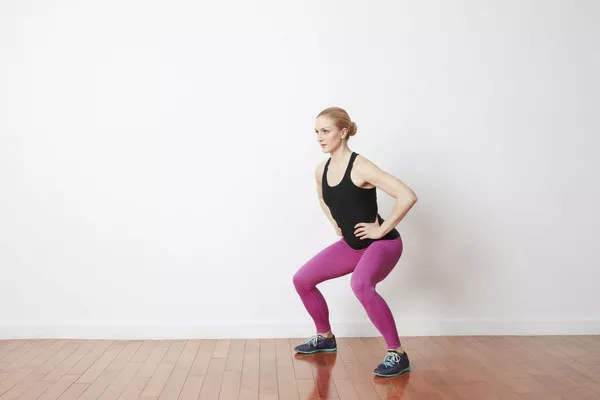In the realm of fitness, the idea of incorporating cardiovascular exercise while simultaneously maintaining muscle mass can be a daunting challenge. Many individuals fear that engaging in cardio activities will lead to muscle loss, particularly if not approached strategically. However, with the right techniques and understanding, it is entirely possible to achieve cardiovascular fitness goals without sacrificing hard-earned muscle mass. In this comprehensive guide, we delve into the science behind muscle preservation during cardio and provide practical strategies to help you strike the perfect balance between cardiovascular exercise and muscle retention.
Understanding the Cardiovascular-Muscle Relationship
Before diving into the strategies for preserving muscle mass during cardio, it’s essential to grasp the underlying physiological processes at play. Cardiovascular exercise primarily targets the cardiovascular system, including the heart and lungs, aiming to improve endurance, stamina, and overall cardiovascular health. On the other hand, resistance training is the cornerstone of muscle building and maintenance, stimulating muscle growth through progressive overload and resistance.
When it comes to the potential conflict between cardio and muscle preservation, the key lies in understanding the body’s energy systems. During cardiovascular exercise, the body primarily relies on aerobic metabolism, utilizing oxygen to generate energy. In contrast, resistance training predominantly taps into anaerobic metabolism, which does not require oxygen and involves the breakdown of glycogen for fuel. This fundamental difference in energy pathways forms the basis for devising strategies to mitigate muscle loss during cardio.
Strategies for Preserving Muscle Mass During Cardio
Implement High-Intensity Interval Training (HIIT): HIIT is a form of cardiovascular exercise characterized by alternating periods of high-intensity bursts and low-intensity recovery phases. Unlike steady-state cardio, which can lead to muscle breakdown over time, HIIT has been shown to preserve muscle mass while still providing significant cardiovascular benefits. By incorporating short bursts of intense effort followed by brief recovery periods, HIIT maximizes calorie burn and fat loss while minimizing the risk of muscle catabolism.
Prioritize Strength Training: One of the most effective ways to prevent muscle loss during cardio is to prioritize strength training in your fitness routine. By maintaining or even increasing your resistance training regimen, you signal to your body the importance of preserving muscle mass. Additionally, strength training stimulates muscle protein synthesis, counteracting any potential muscle breakdown induced by cardio activities.
Time Your Cardio Sessions Wisely: The timing of your cardio sessions in relation to your strength training workouts can significantly impact muscle preservation. Performing cardio immediately after resistance training may interfere with muscle recovery and growth, potentially increasing the risk of muscle loss. Instead, consider scheduling cardio sessions on separate days or at least several hours apart from your strength training sessions to optimize recovery and minimize interference.
Monitor Nutrient Intake: Proper nutrition plays a critical role in supporting muscle maintenance during cardio exercise. Ensure that you’re consuming an adequate amount of protein to provide essential amino acids for muscle repair and growth. Additionally, carbohydrates are crucial for replenishing glycogen stores depleted during cardio sessions, helping to preserve muscle energy reserves. Aim for a well-balanced diet that provides sufficient calories and nutrients to support your fitness goals.
Incorporate Low-Impact Cardio Modalities: While high-impact cardio activities like running and jumping can be effective for cardiovascular fitness, they may also place undue stress on joints and muscles, potentially leading to muscle breakdown over time. To mitigate this risk, consider incorporating low-impact cardio modalities such as cycling, swimming, or using an elliptical machine. These exercises provide cardiovascular benefits with minimal impact on muscle tissue, allowing for safer and more sustainable long-term training.
Gradually Increase Cardiovascular Intensity: When introducing cardio into your fitness routine, it’s essential to start gradually and progressively increase the intensity over time. Rapidly ramping up the duration or intensity of cardio workouts can trigger excessive muscle breakdown, undermining your efforts to preserve muscle mass. Instead, aim for incremental increases in cardio intensity while monitoring your body’s response and adjusting accordingly.
Stay Hydrated and Rested: Proper hydration and adequate rest are often overlooked but crucial aspects of preserving muscle mass during cardio exercise. Dehydration can impair muscle function and recovery, increasing the risk of muscle breakdown. Aim to drink water regularly throughout the day, especially before, during, and after cardio sessions. Additionally, prioritize quality sleep to optimize muscle repair and growth, as inadequate sleep can hinder recovery and contribute to muscle loss.
Conclusion
Incorporating cardiovascular exercise into your fitness routine doesn’t have to come at the expense of muscle mass. By understanding the physiological principles underlying muscle preservation during cardio and implementing strategic approaches, you can achieve your cardiovascular fitness goals while maintaining your hard-earned muscle gains. Whether it’s incorporating HIIT, prioritizing strength training, or choosing low-impact cardio modalities, there are numerous strategies available to strike the perfect balance between cardio and muscle retention. Remember to listen to your body, monitor your progress, and adjust your approach as needed to optimize both cardiovascular health and muscle maintenance. With dedication, consistency, and a well-rounded fitness regimen, you can enjoy the benefits of cardio exercise while preserving your valuable muscle mass for a strong, healthy body.
[inline_related_posts title=”You Might Be Interested In” title_align=”left” style=”list” number=”6″ align=”none” ids=”8841,8838,8834″ by=”categories” orderby=”rand” order=”DESC” hide_thumb=”no” thumb_right=”no” views=”no” date=”yes” grid_columns=”2″ post_type=”” tax=””]

































